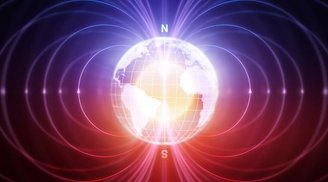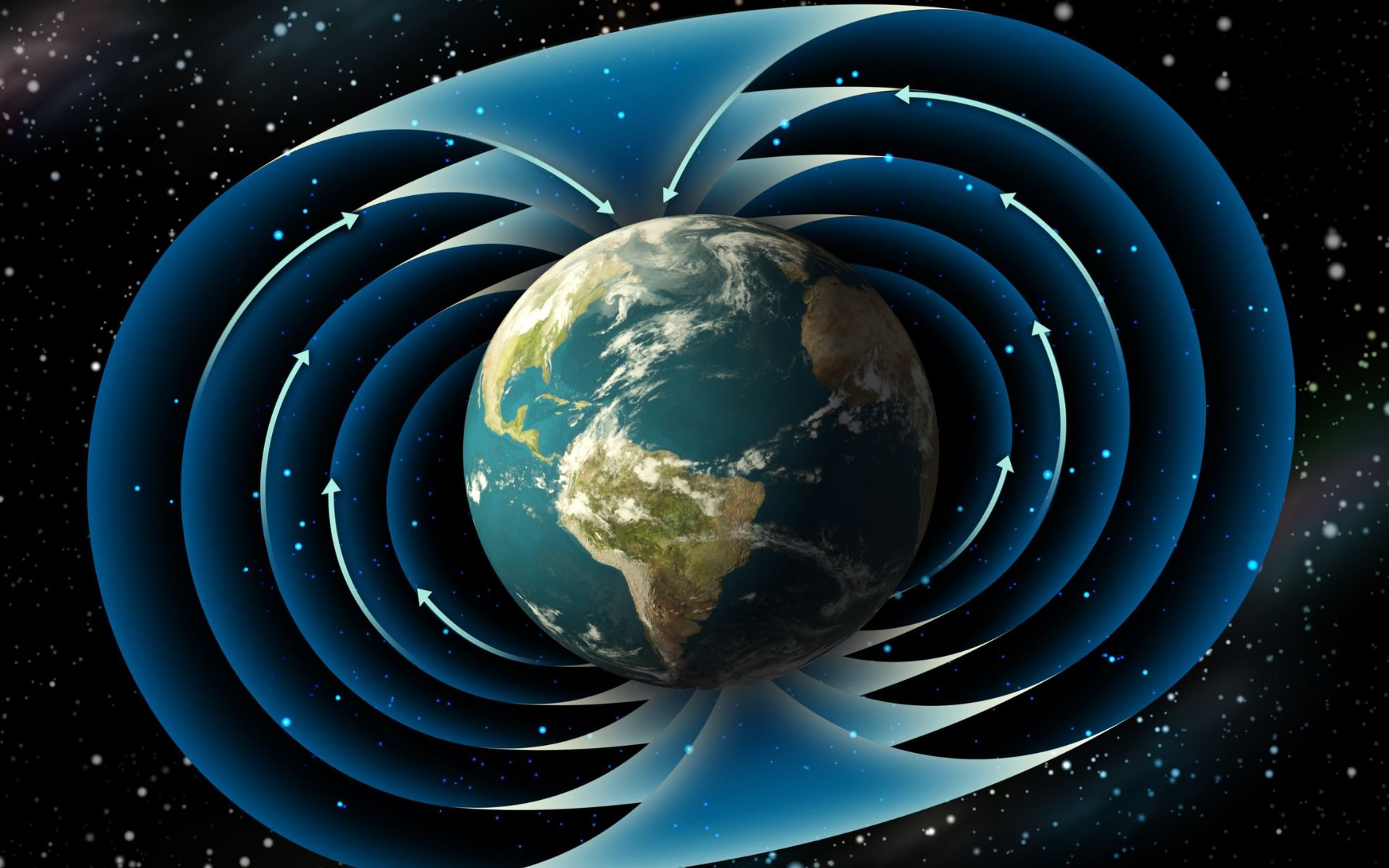To date, Earth is considered the only celestial body in the Solar System that shows signs of life, but there are some important features that make our planet such a unique place. For example, Earth offers an oxygen-rich atmosphere and an abundant water environment; besides, It is considered the only rocky planet in this space region with two magnetic poles.
Earth’s magnetic field results from the natural motion that occurs at the center of the planet. The solid inner core and liquid metal outer core move due to thermal convection produced during this dynamic, a process that produces electrical currents. Thus, electric currents interact with each other and create a magnetic field, which also enables life on Earth.
It is precisely this cycle of inner and outer cores that produces the geodynamo and thus the Earth’s magnetic field. From this process, the planet’s magnetic poles are created, which are thought to be crucial for systems involving geolocation.
However, it is important to emphasize that the magnetic poles are not fixed but constantly moving at a considerable speed. For example, since 1831 the position of the North Pole has changed by approximately 1,100 kilometers; right now, scientists suggest the change is about 55 kilometers per year.
TecMundo gathered information from space agencies, scientists and experts in the field to explain a little more why planet Earth has magnetic poles. Check out!
Earth’s magnetic poles
Earth’s magnetic field, called the magnetosphere, protects humanity against solar winds, radiation, coronal mass ejection particles, and cosmic rays from space. It is not surprising that in areas of the Earth where the magnetosphere is thought to be slightly weaker, extra doses of radiation can ‘pierce’ it and unfortunately cause diseases such as skin cancer.
scientists explain The magnetosphere serves as a protective field against some forces that would make life on Earth impossible.. Some animals, such as fish and birds, also use the magnetosphere to guide themselves; It acts as an internal compass for these creatures.
“Since the forces that create our magnetic field are constantly changing, the field itself is in a constant state of flux, its intensity increasing and decreasing over time. This causes the position of Earth’s north and south magnetic poles to gradually change or even completely reverse approximately every 300,000 years,” NASA explains in a release.
When the liquid metal in the outer core moves, its high iron content causes the Earth to have two distinct poles: north and south. It works almost like a magnet, with one pole charged with positive magnetic energy and the other with negative energy. About 80% of the planet’s magnetosphere operates this way, with the other 20% operating as areas that behave less organizedly.
According to information received from NASA, Earth’s magnetic poles may completely reverse every 300,000 yearsHowever, scientists are working on the possibility that a reversal will not occur for approximately 780 thousand years. In other words, many researchers suggest that the poles may reverse at some point in the future.
What is polarity reversal?
As mentioned earlier, geomagnetic inversion is a natural phenomenon of the Earth system that occurs throughout the geological time of the planet. In simpler terms, the north and south poles switch places and the magnetic field weakens. Unfortunately, such an event could cause many problems for humanity.

After the complete change of poles, the magnetic field will weaken, but will continue to protect the Earth from cosmic rays and radiation; Attenuation may also result in increased radiation exposure in the atmosphere.
However, a few serious consequences still need to occur. such as affecting human navigation systems, animals’ internal positioning systems, and even some technologies that depend on magnetic fields.
“During a pole reversal, Earth’s north and south magnetic poles switch places. While this may seem like a big deal, pole shifts are common in Earth’s geological history. “Paleomagnetic records tell us that Earth’s magnetic poles have reversed 183 times in the last 83 million years and at least several hundred times in the last 160 million years,” explains NASA.
So far, there is not enough data to prove that the Earth will undergo a new pole shift in the near future. But since the last one occurred almost 800,000 years ago, it is possible that the planet is about to undergo another inversion event.. There is also evidence that changes in the magnetic field do not cause climate change on the planet.
Did you like the content? So stay up to date with more curiosity about our planet at TecMundo. If you wish, take the opportunity to understand how scientists suggest that the Earth’s core is at rest and may rotate in the opposite direction.
Source: Tec Mundo
I’m Blaine Morgan, an experienced journalist and writer with over 8 years of experience in the tech industry. My expertise lies in writing about technology news and trends, covering everything from cutting-edge gadgets to emerging software developments. I’ve written for several leading publications including Gadget Onus where I am an author.











